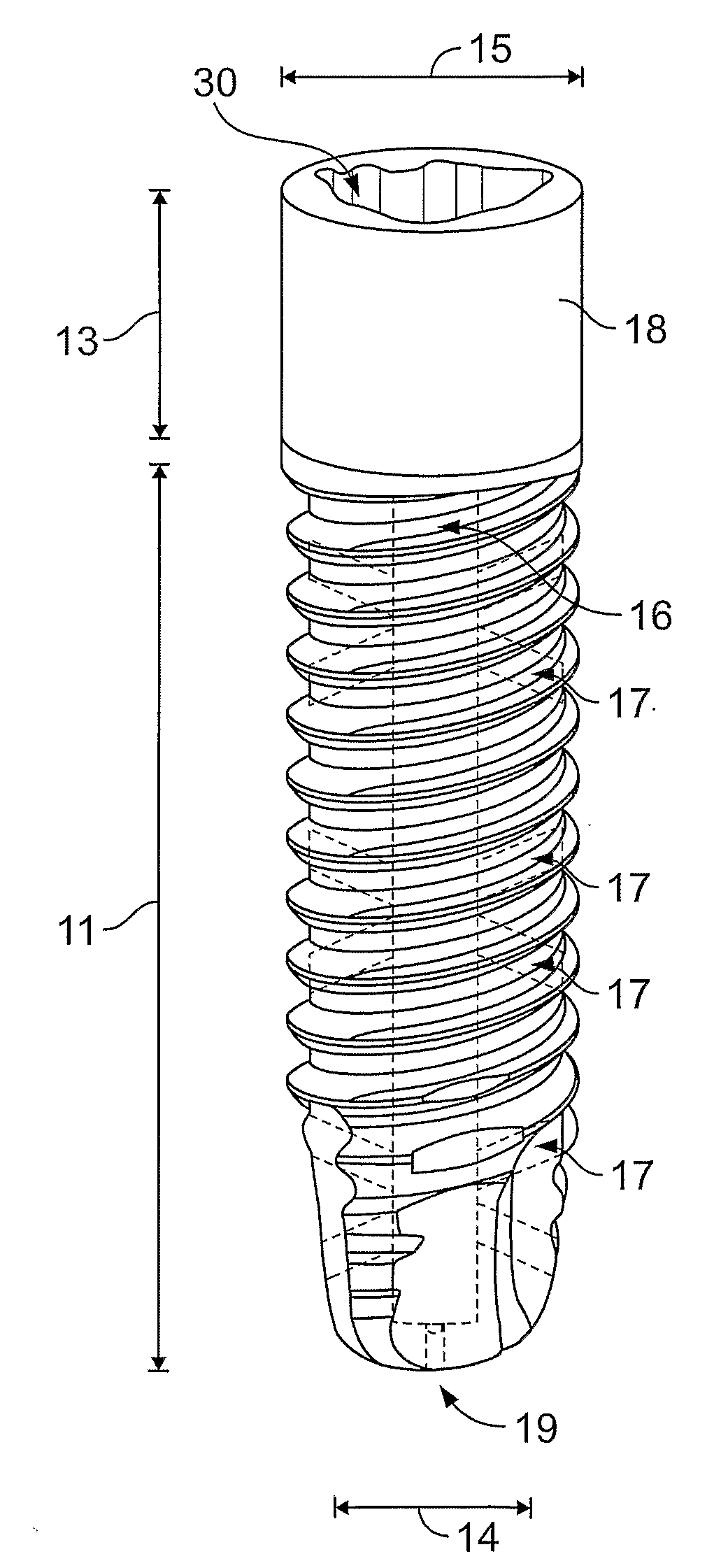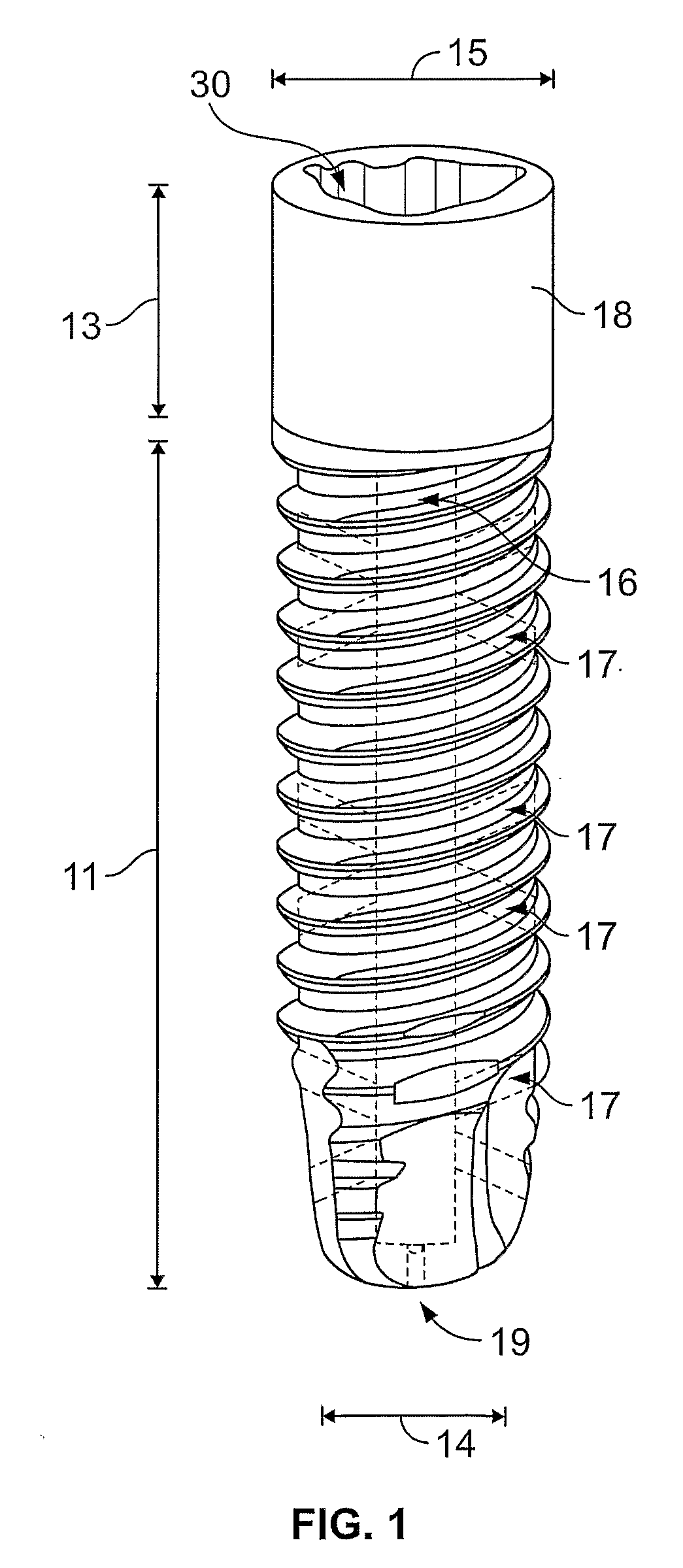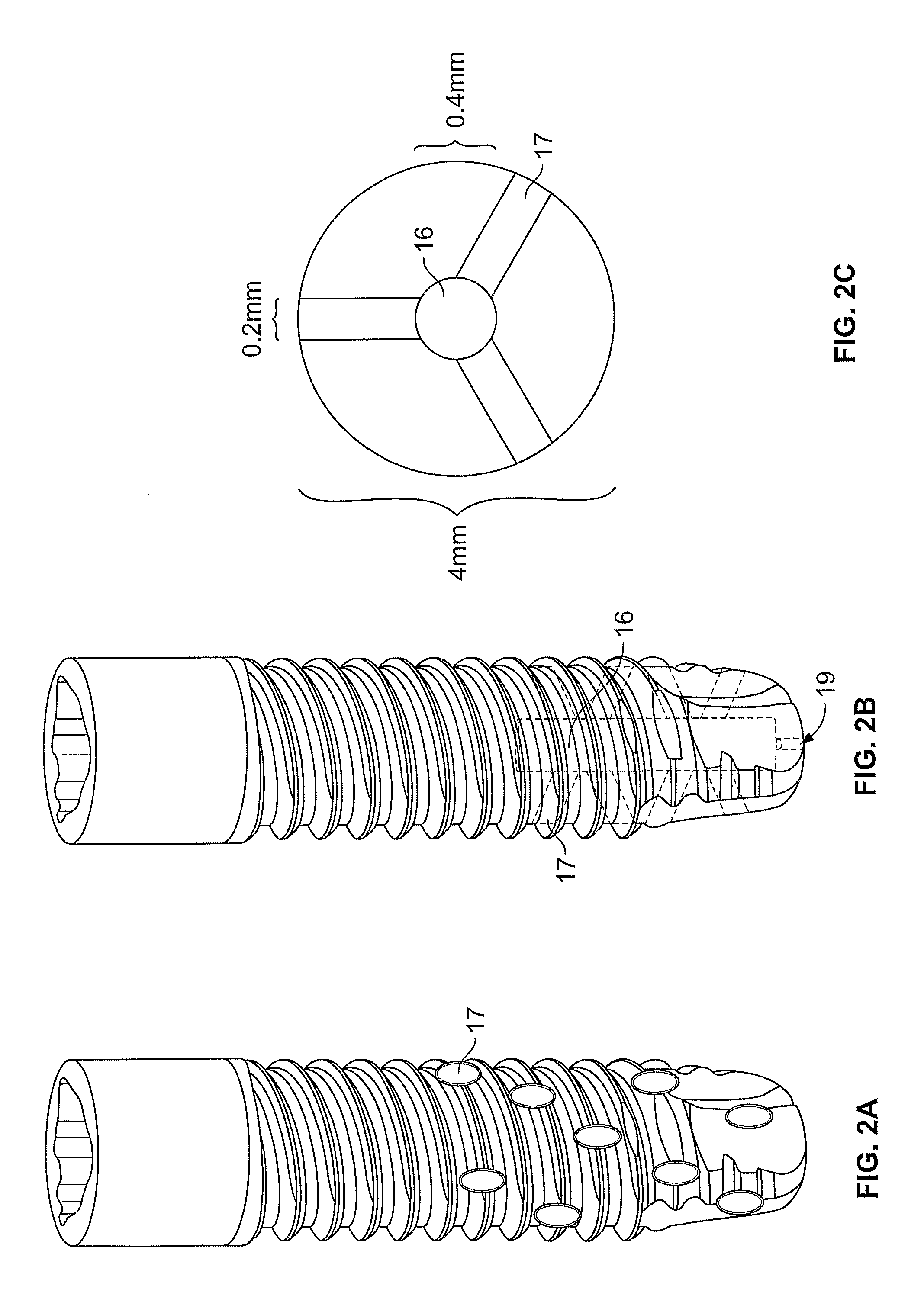Dental Implant Screw and Method of Use
a technology of dental implants and screws, applied in the field of dental implants, can solve the problems of loose and unattached implants, insufficient support to provide adequate foundation for dentition, and other dental implants failing
- Summary
- Abstract
- Description
- Claims
- Application Information
AI Technical Summary
Problems solved by technology
Method used
Image
Examples
example 1
[0030]This example describes a method of determining an optimal carrier.
[0031]In order to ensure a high, sustained, local delivery of antibiotics, the antibiotic of choice will have to be embedded within a polymer that elutes at an optimal rate. Therefore, the elution characteristics of a number of different polymers presently approved for use in humans were evaluated. The six types of carrier substances that were tested included non-biodegradable polymethylacrylate (PMMA) (Howmedica Inc., Houston, Tex.), biodegradable PLA (Polysciences Inc., Warrington, Pa.) with a molecular weight (MW) of 2,000, varied ratios of biodegradable PL:CG (Polysciences Inc., Warrington, Pa.) of 90:10, 80:20 and 70:30, and a combination of the PLA and the 70:30 ratio of PL:CG. In order to account for the differences in clinical dosages for each of the antibiotics tested, each antibiotic used in the study was employed in a ratio of grams antibiotic:grams bead material at levels of 1:6.6, 1:4.1, and 1:10.0 ...
example 2
[0035]This example describes the development of an animal model.
[0036]After finding the optimal carrier substance formulation, we determined if the proposed carrier substance could also deliver effective concentrations in vivo in a worst case scenario situation. Therefore, the formulation was used to treat an active chronic infection in a localized osteomyelitis model in 2 to 3 kg female New Zealand White rabbits. The localized osteomyelitis model was a combination of Fitzgerald's dog model and Shirtliff and Mader's rabbit model (Fitzgerald, J. Bone Joint Surg. [Am.] 65:371-380 (1983); Mader et al., p. 581-591. In Zak and Sande (ed.), Handbook of Animal Models of Infection. Academic Press Ltd., London, England (1999); Shirtliff et al., J. Antimicrob. Chemother. 48:253-258 (2001); Shirtliff et al. (2002), supra; Shirtliff et al., Antimicrob. Agents Chemother. 46:231-233 (2002); and Shirtliff et al., Clin. Orthop. 359:229-236 (1999)).
[0037]A biodegradable antibiotic bead delivery syst...
example 3
[0044]This example describes testing of a prototype of the implantable dental screw.
[0045]We designed and fabricated several prototypes to test the principle of antibiotic elution from small channels that were machined into implants. The channels were designed to be small enough to not impact the structural integrity of the implant but elute enough antibiotics for 3-4 weeks post-surgery. Once the implant prototypes were machined, we combined the 70:30 PL:CG with tobramycin at a ratio of antibiotic to carrier substance of 1:4.1. This mixture was then combined with acetone until a viscous mixture was attained and then injected into the small channels of the implant prototype (see FIG. 1). Each of the implants was placed in one milliliter of phosphate-buffered saline (PBS, pH 7.2) and incubated at 37° C. Small samples (i.e. 20 μl) were taken 4, 8, and 12 hours after submerging the implant in PBS. Every 24 hours, the implants were removed, shaken free of excess PBS, and transferred to f...
PUM
 Login to view more
Login to view more Abstract
Description
Claims
Application Information
 Login to view more
Login to view more - R&D Engineer
- R&D Manager
- IP Professional
- Industry Leading Data Capabilities
- Powerful AI technology
- Patent DNA Extraction
Browse by: Latest US Patents, China's latest patents, Technical Efficacy Thesaurus, Application Domain, Technology Topic.
© 2024 PatSnap. All rights reserved.Legal|Privacy policy|Modern Slavery Act Transparency Statement|Sitemap



